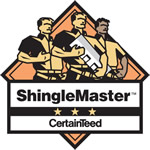The Complete Guide to Fascia and Soffit

Fascia
The fascia is the part of the house that holds the gutters. It runs along the lining of the roof and joins the ends of the trusses and rafters. This area of fascia prevents moisture from accessing the roof leading to damage. They are visible from the outside of the house. Most of them are made out of wood but can be made out of materials such as plastic, aluminum, and vinyl, too.
The Role of Fascia
1. It prevents moisture from accessing the roof and the inside of the house. It does this by blocking the entrance of this moisture.
2. It has an aesthetic role. This part of the roof has a smooth finishing that makes the exterior of the house attractive depending on how it is installed and the materials you use. Most fascias are made of wood and this gives a sophisticated and smooth finish for such houses.
The fascia is prone to be damaged if moisture accesses the inner part of the board. The main causes of this include winter ice dams, improper shingle overhang, and clogged gutters. Basically, anything that would affect the drainage system of the roof.
Soffit
Unlike the fascia, the soffit exterior is at the span under the tails of the rafter.
The Role of Soffit
1. It prevents roof damage by pests such as squirrels, birds, and bats.
2. They help disguise the attic ventilation system.
3. It protects your house against water that is blown towards the interior by high winds as it rains.
A soffit requires proper and regular maintenance. If this is not done, the soffit acts as a water collection point. Make sure that you regularly inspect the fascia, especially as you inspect the gutters. Ensure that it is caulked, sealed, and well painted. Most of the time the materials that are used to construct the soffit include wood and aluminum. However, nowadays some owners have diverted from the norm. They are beginning to consider materials that are synthetic such as vinyl and UPVC. This is because they provide durability and ease up the maintenance process.
The synthetic materials provide numerous alternatives. This is because they are products of recycling thus serve homeowners who are careful about the sustenance of their environment. Some of these synthetic materials offer a wood grain finish thus can be used as an alternative. Apart from this, they can appear smooth or beaded depending on how you want the exterior to look like.
Replacing either of the two is quite affordable depending on the size of the house or the materials that you use. In fact, replacing the fascia and soffit is more affordable than conducting a repair. Consult with your licensed local service provider on your available options and the service you can get under your budget. Alternatively, as you inspect the following tips should guide you on what to do:
1. If you opt to have a DIY fascia installation, make sure that you cut the pieces longer than you had measured them. This will help you overlap the pieces as you install.
2. Make sure that you look out for wasp, hornets, and bee nests. You can remove them personally or call a professional to do it for you.
3. Clean off any mould or mildew in this area with the aid of a soft broom or brush and some cleaning solution that comprises of water and bleach.

In Awe Roofing Limited is an Award-Winning, family owned and operated Vancouver Roofing Contractor with over 17 years of roofing experience. We serve the entire Lower Mainland area, from Whistler to Chilliwack, employing a team of professional staff members. Our team has won numerous awards including Best of Homestars for the last five years, and Three Best Rated six years in a row. Learn more






















